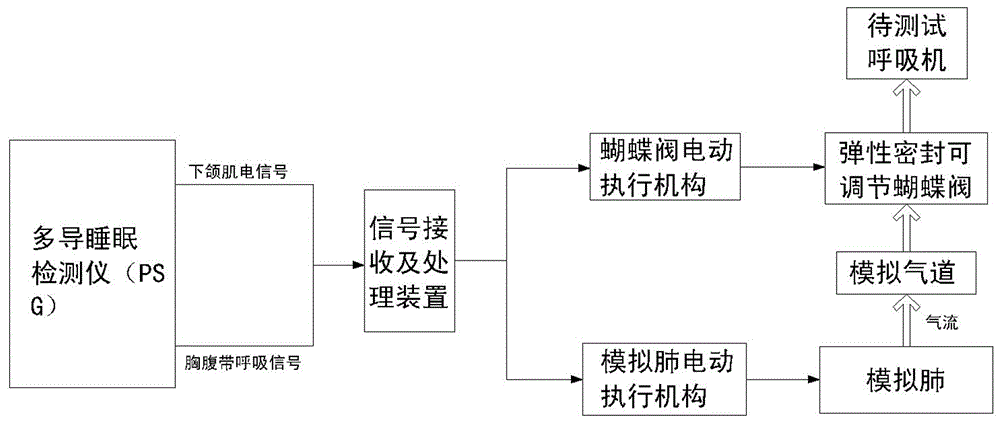A human respiratory simulation system
A technology for simulating the system and airway, which is applied in the direction of educational appliances, instruments, teaching models, etc., can solve problems such as gaps, unclear distinction between central apnea and obstructive apnea, and inability to adjust airway resistance online to improve performance , the effect of shortening the R & D cycle
- Summary
- Abstract
- Description
- Claims
- Application Information
AI Technical Summary
Problems solved by technology
Method used
Image
Examples
Embodiment Construction
[0034] Such as figure 1As shown, the human airway simulation system of the present invention includes polysomnography (PSG), signal receiving and processing device, elastic seal adjustable butterfly valve, butterfly valve electric actuator, simulated lung, simulated lung electric actuator , the simulated airway and the ventilator to be tested, wherein the polysomnography instrument is used to collect chest and abdominal belt breathing signals and mandibular electromyographic signals and input the collected signals into the signal receiving and processing device, and the signal receiving and processing The device processes the received mandibular myoelectric signal and sends it to the electric actuator of the butterfly valve. The electric actuator of the butterfly valve controls the elastic seal according to the magnitude of the input signal to adjust the opening and closing degree of the butterfly valve to adjust the simulated airway resistance and Simulate the airway output ...
PUM
 Login to View More
Login to View More Abstract
Description
Claims
Application Information
 Login to View More
Login to View More - R&D
- Intellectual Property
- Life Sciences
- Materials
- Tech Scout
- Unparalleled Data Quality
- Higher Quality Content
- 60% Fewer Hallucinations
Browse by: Latest US Patents, China's latest patents, Technical Efficacy Thesaurus, Application Domain, Technology Topic, Popular Technical Reports.
© 2025 PatSnap. All rights reserved.Legal|Privacy policy|Modern Slavery Act Transparency Statement|Sitemap|About US| Contact US: help@patsnap.com

